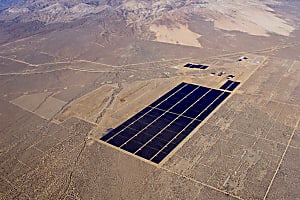It’s that time of the year when summer comes knocking on our doors. And as the searing heat begins to bear down, thirst levels rise. For many, aerated drinks are the preferred choice to soothe those parched throats. But if we turn back the clock, there was only one unrivalled fizzy drink that had a glory run for decades.
Its unique ‘pop’ sound is seldom heard nowadays, but once upon a time, the marble-stoppered soda or ‘guddeanchi’ soda had a fan following like no other. At every nook and corner, at every gaddo and tavern, at every bazaar and bus stand, at every village feast and zatra, and at every football and cricket match, this humble soda was a ubiquitous sight.
With the emergence of the crown-capped bottles, this soda was relegated to the background, and eventually faded from memory. Only a handful of people keep this tradition alive, despite its unviability and the risks involved.
Babu Soda’s popularity extends far beyond the hilly slopes of Headland Sada in Vasco. Despite his age, 85-year-old Bhagwan Babli Naik, the proprietor, religiously produces the soda twice a day. “My customers have urged me to continue making it, or else I would have quit long ago. In fact, I had to halt production for almost a week as I ran out of bottles. But I managed to recently get my hands on 100 of these from Satarda (Maharashtra),”
Naik says.
The octogenarian has been renewing his soda-making licence since 1961. Using his faithful 30-year-old soda making machine that sits in a corner of his small porch, Naik produces around 100 soda bottles a day. And the price of each bottle? A princely sum of Rs 3 considering that Naik used to sell it for 1 anna when he first started off.
“I hardly earn any profit. On the contrary, I have to spend a lot more on gas, transporting the cylinder, replacing the bottles due to breakage and getting spares. I am just trying to keep myself busy.”
One reason why many dropped producing ‘goti soda’ is the unavailability of these reusable bottles. Even essential spares are hard to come by.
“I suspended production some days ago as I ran out of rubber gaskets. I recently visited Belagavi, but had to return empty handed due to unavailability. I plan on going again,” says 65-year-old Prabhakar Naik from Bicholim.
And there are others like Ponda-based Rajnish Anand Kaplishwarkar who took forward his age-old father’s business.
“Our bottles are around 80 years old. I am not producing soda on a regular basis today, but until a few years ago, I have even supplied soda to a popular 5-star resort in Benaulim, for German delegates. And since no one could open these bottles, I was hired to do the job,” he says.
Kaplishwarkar says his father learnt to produce the soda way back in 1944 at the age of seven. “Later, my father began producing his own soda labelled ‘Anand Gaz de Sod’. We had a Chinese filter for the water. Special wooden crates were needed to store these bulky bottles, and these crates were only crafted by specialised carpenters,” he says.
Owner of Mapusa’s Aram Soda, Suresh Visso Vengurlekar, fondly reminisces about the days where he would produce 24 bottles in under three minutes. “Back in the day, the Portuguese were very particular about hygiene. Officials from the ‘Delegado de Saude’ (Portuguese health department) would carry out inspections to issue licences. Each bottle had to be thoroughly washed with a brush. The water had to be first boiled, cooled overnight in earthen pots and then filled into the bottles. But many of the ‘sodkars’ (soda makers) would give this a skip and simply use well
water,” he says.
Another reason for the soda’s decline is the risk involved in the refilling process.
“I injured myself on numerous occasions,” says Laximan Ragoba
Kandolkar while showing off his scars. “There is a tendency for the bottle to burst. Even a hairline crack can cause an explosion. I had to wear a mask with a steel netting to protect myself,” says Kandolkar, who runs a beverage
store at
Saligao.
“Be it at feasts or zatras, in the days of yore, lime soda stalls that used guddi soda were a favourite. We would insert a tube into the soda bottle so that when the bottle was popped, it would create a peculiar high-pitched sound, attracting people’s attention,” says Kaplishwarkar.
While today’s generation has missed out on many such traditions, all hope is not lost. Saligao-based businessman Eknath Oraskar has given the Codd-necked soda bottle a new lease of life.
“Collecting these marbles was a popular hobby for kids, while the bottle itself is a novelty. I want to rekindle these memories. The only challenge is in procuring these handmade bottles,” says Oraskar.
1872 British soft drink maker Hiram Codd of Camberwell, London, designed and patented this eponymous globe-stoppered bottle specifically for carbonated drinks
Unique bottle design
The closing design is based on a glass marble enclosed within a recess in the lip
The bottle is pinched into a special shape to provide a chamber into which the marble is pushed when opening the bottle. This also prevents the marble from blocking the neck as the drink is poured
To be able to withstand internal gas pressure, the bottle is made from thick, heavy glass
Bottles are filled upside down, and the pressure of the gas in the bottle forces the marble against the washer, forming an airtight seal in carbonation
The bottle can be popped open using one’s thumb or a wooden/plastic plunger
In Goa, two types of bottles are available—greyish-coloured bottles manufactured abroad (300 ml, with white marble) and green bottles manufactured in India (200-250 ml, with blue marble)
 Soda
Soda  Soda
Soda 



